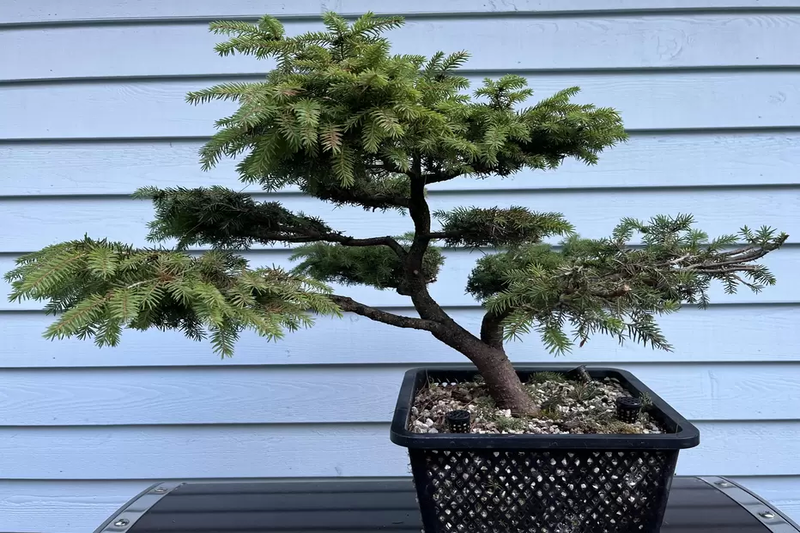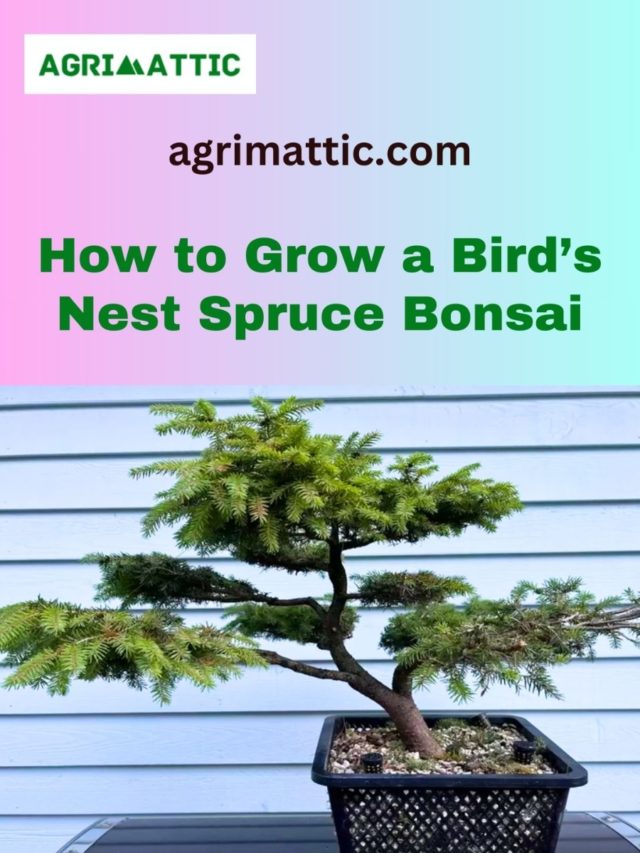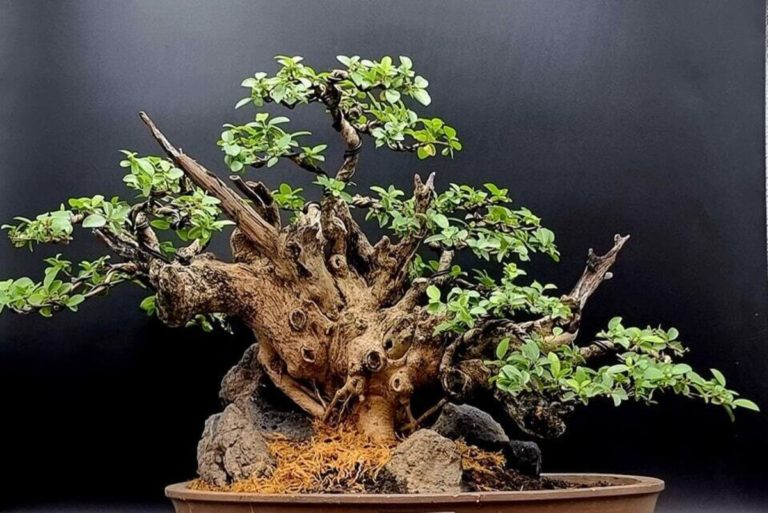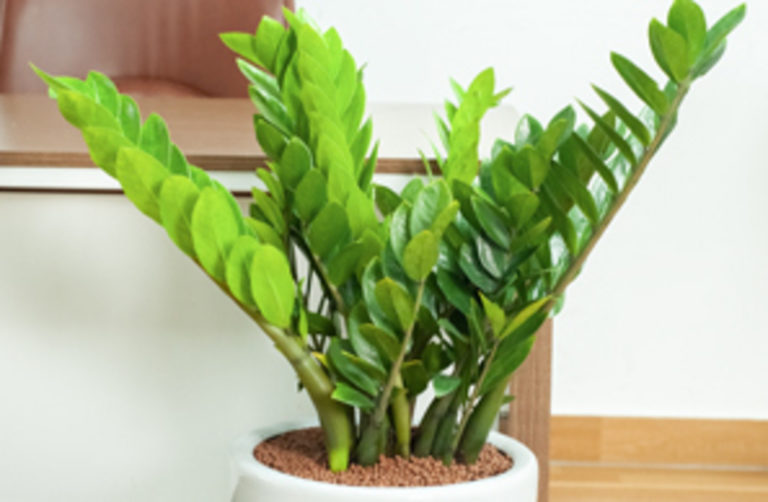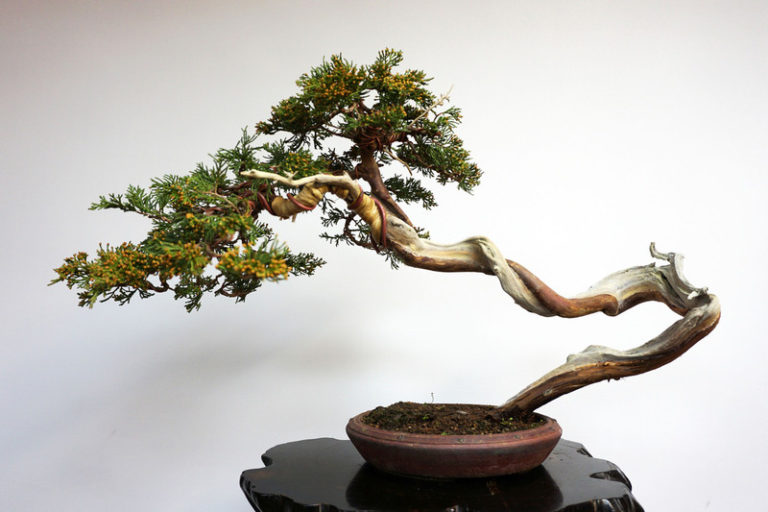Birds Nest Spruce Bonsai: The Perfect Addition to Your Garden
Bonsai trees are miniature trees that are grown and trained in containers. One type of bonsai that is particularly unique and interesting to grow is the Bird’s Nest Spruce Bonsai. This type of bonsai tree is known for its compact growth habit, delicate foliage, and cones that resemble bird’s nests.
What is a Bird’s Nest Spruce Bonsai?
The Bird’s Nest Spruce A type of bonsai tree is one that is grown and taught to look like a small spruce tree. The unique form of this bonsai tree’s growth, which looks like a pyramid, is what gives it its name. The branches of the Birds Nest Spruce Bonsai grow in a horizontal pattern, giving the tree a look that is stacked and three-dimensional.
The needle-like leaves of the tree grow in a tight circular pattern around the branches. The Bird’s Nest Spruce Bonsai gets its name from the way its cones look like tiny bird’s nests. Bonsai lovers can get a lot out of growing and taking care of a Bird’s Nest Spruce Bonsai.
History and Origins of the Bird’s Nest Spruce Bonsai
The Birds Nest Spruce Bonsai is a cultivated variety of the Picea abies species, which is native to the mountainous regions of Europe. This species of spruce tree has been grown as ornamental plants for centuries due to their aesthetic appeal and has been cultivated as bonsai trees for many decades.
The precise history of the Birds Nest Spruce Bonsai is unknown, however it is said to have originated in Japan in the mid-20th century. Bonsai lovers in Japan and throughout the world have deliberately bred and cultivated numerous species of spruce trees to create distinctive and attractive bonsai specimens. The Birds Nest Spruce Bonsai’s tight growth habit and delicate leaves make it a particularly desired species among bonsai producers.
Today, bonsai lovers from all over the world cultivate and appreciate Birds Nest Spruce Bonsai. They are valued for their distinct appearance and are a popular choice for people searching for a small and visually appealing bonsai tree to add to their collection. While the actual history and origins of the Birds Nest Spruce Bonsai are unknown, its popularity and appeal are obvious indications of its continuing beauty and charm.
Types of Bird’s Nest Spruce Bonsai
There are several types of Birds Nest Spruce Bonsai that are popular among bonsai enthusiasts. These types differ in their size, growth habits, and needle color. Some of the most popular types of Bird’s Nest Spruce Bonsai are:
Picea abies “Nidiformis”: This is the most commonly cultivated variety of Birds Nest Spruce Bonsai. It has a compact, round growth habit and short, blue-green needles.
Picea abies “Little Gem”: This variety of Birds Nest Spruce Bonsai is slightly larger than ‘Nidiformis’ and has a more pyramidal growth habit. Its needles are also slightly longer and a darker shade of green.
Picea abies “Acrocona”: This variety of Birds Nest Spruce Bonsai is known for its distinctive red cones that appear on the branches in the spring. It has a slightly larger growth habit than ‘Nidiformis’ and ‘Little Gem’, and its needles are a medium shade of green.
Picea abies ‘Pusch’: This is a slower-growing variety of Birds Nest Spruce Bonsai with a dense, compact growth habit. Its needles are a deep shade of green and slightly shorter than those of other varieties.
All of these Birds Nest Spruce Bonsai may be lovely additions to a bonsai collection, and their distinct traits make them a favorite option among bonsai aficionados.
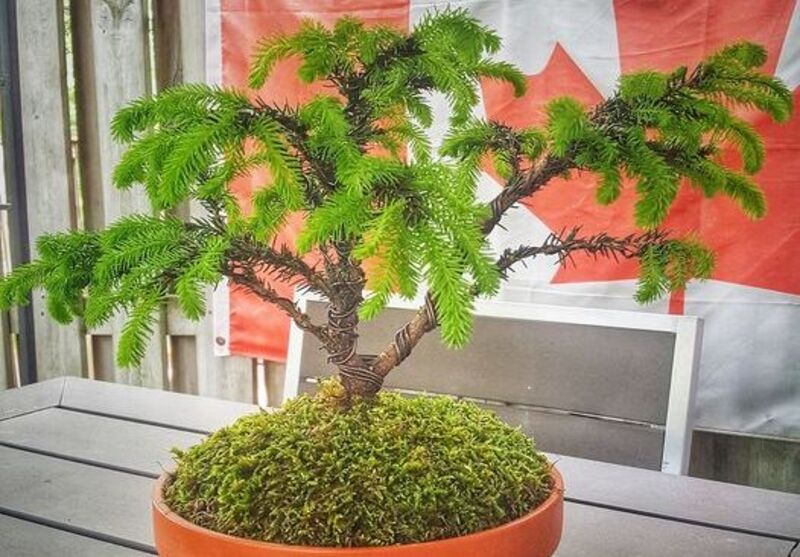
Bird’s Nest Spruce Bonsai and its Symbolism
In bonsai culture, different trees and styles are often associated with different meanings and symbolism. The Birds Nest Spruce Bonsai is no exception and is often associated with symbolism that reflects its unique characteristics and appearance.
One of the most common meanings associated with the Bird’s Nest Spruce Bonsai is longevity and endurance. This is due to the fact that spruce trees are known for their ability to thrive in harsh, cold climates and can live for hundreds of years. The compact, layered growth habit of the Birds Nest Spruce Bonsai also represents stability and resilience.
In Japanese culture, the spruce tree is also associated with feelings of peace and calmness. This is reflected in the delicate foliage and serene appearance of the Birds Nest Spruce Bonsai, making it a popular choice for those who are looking to create a peaceful and calming atmosphere in their home or garden.
The cone-shaped appearance of the Birds Nest Spruce Bonsai has also been associated with the concepts of protection and nurturing. The cone is seen as a symbol of a safe and nurturing environment, making the Birds Nest Spruce Bonsai a popular gift for parents and families.
Overall, the symbolism connected with the Birds Nest Spruce Bonsai reflects the tree’s unique and enticing traits, making it a popular option for bonsai fans searching for a tree that not only looks lovely but also conveys a deeper meaning and importance.
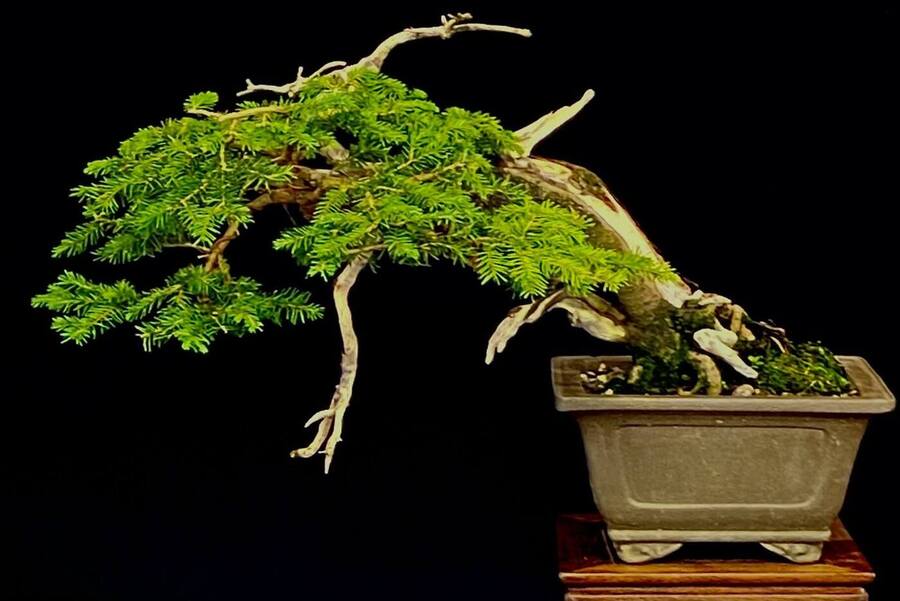
Characteristics of the Bird’s Nest Spruce Bonsai
The Birds Nest Spruce Bonsai has several distinctive characteristics that make it a unique and visually interesting tree. Here are some of the most notable characteristics of the Bird’s Nest Spruce Bonsai:
Compact, layered growth habit: The branches of the Birds Nest Spruce Bonsai grow in a horizontal pattern, creating a dense, layered appearance that resembles the shape of a pyramid.
- Delicate needles: The foliage of the Birds Nest Spruce Bonsai is made up of tiny needles that grow in a tight, spiral pattern around the branches. These needles are short and soft, making them a pleasure to touch and admire.
- Conical shape: The cones of the Birds Nest Spruce Bonsai are small and cone-shaped, resembling tiny bird’s nests. They are a dark shade of brown and can add an interesting and unique texture to the tree.
- Evergreen: Spruce Bird’s Nest Bonsai is an evergreen tree, which means it keeps its leaves all year. This might be especially tempting to bonsai fans searching for a tree that looks lovely in every season.
- Hardy and resilient: Spruce Bird’s Nest Bonsai is a tough tree that can thrive in a variety of situations, including cold weather and poor soil. This makes it an excellent alternative for bonsai gardeners that live in difficult regions.
The Birds Nest Spruce Bonsai is a one-of-a-kind visual feast, boasting a number of striking features. Its hardiness and tenacity make it a practical choice for anybody searching for a tree that can survive in a variety of situations, and its compact growth pattern, thin needles, and conical shape make it a popular bonsai tree.
How to Grow a Bird’s Nest Spruce Bonsai
Growing a Bird’s Nest Spruce Bonsai takes some work, but bonsai fans can find it very satisfying. Here are some steps to take when growing a Bird’s Nest Spruce Bonsai:
Choose the right pot and soil: Choose a shallow pot with good drainage, as the Birds Nest Spruce Bonsai prefers well-draining soil. A mixture of akadama, pumice, and lava rock is an excellent choice for soil.
Prune regularly: Prune the branches of your Birds Nest Spruce Bonsai regularly to maintain its compact, layered appearance. You can also pinch back the new growth to encourage branching.
Water regularly: The Birds Nest Spruce Bonsai prefers to be kept slightly moist but not too wet. Water your tree regularly, but allow the soil to dry out slightly between watering.
Fertilize monthly: Fertilize your Birds Nest Spruce Bonsai once a month during the growing season (spring through fall) using a balanced fertilizer.
Provide adequate light: The Birds Nest Spruce Bonsai prefers bright, indirect light. If you are growing your bonsai indoors, place it near a window that receives plenty of sunlight.
Protect from extreme temperatures: While the Birds Nest Spruce Bonsai is resilient and can withstand cold weather, it should be sheltered from excessive temperatures. If you reside in a location with hard winters, try putting your bonsai indoors during the harshest months.
Repot every 2-3 years: Repot your Birds Nest Spruce Bonsai every 2-3 years to refresh the soil and prevent the roots from becoming too crowded.
By following these steps, you can successfully grow a beautiful and healthy Birds Nest Spruce Bonsai that will be a joy to admire and care for over the years.
Benefits of the Bird’s Nest Spruce Bonsai
The Birds Nest Spruce Bonsai offers its proprietors several benefits in addition to its aesthetic appeal. Here are some of this bonsai’s primary advantages:
- Stress relief: Caring for a bonsai can be a calming and stress-relieving activity. Tending to the needs of a living tree can be therapeutic and can help reduce anxiety and stress levels.
- Air purification: Like all plants, the Birds Nest Spruce Bonsai helps to purify the air by removing toxins and pollutants from the surrounding environment. This can help improve indoor air quality and promote better respiratory health.
- Natural décor: The Birds Nest Spruce Bonsai is a gorgeous and natural piece of décor that can add elegance and tranquility to any room or outdoor area.
- Educational tool: Growing and caring for a bonsai can be a valuable educational tool, teaching children and adults about plant biology, horticulture, and the importance of environmental conservation.
- Creative outlet: Bonsai cultivation can be an outlet for creativity, permitting devotees to express themselves through the shaping and designing of their trees. Those in search of a method to express their artistic side may find it to be a satisfying and pleasurable hobby.
Overall, the Birds Nest Spruce Bonsai offers a range of benefits to its owners, from its calming influence to its air purification properties to its educational and creative potential.
Styling and Design of the Bird’s Nest Spruce Bonsai
The Birds Nest Spruce Bonsai is a beautiful and versatile tree that can be styled and designed in a variety of ways. Here are some common styling and design techniques used for the Bird’s Nest Spruce Bonsai:
Layered appearance: The Birds Nest Spruce Bonsai naturally has a layered appearance, with its branches growing outwards and upwards in a conical shape. To enhance this feature, prune the branches regularly and pinch back the new growth to encourage branching.
Cascade style: The cascade style is a popular bonsai design that involves letting the branches of the tree cascade downward, mimicking the look of a tree growing on a cliff. The Birds Nest Spruce Bonsai can be trained into this style by wiring the branches downward and allowing them to grow in that direction.
Informal upright style: The informal upright style is a common bonsai design that involves a slightly curved trunk that grows upwards. The Birds Nest Spruce Bonsai can be trained into this style by wiring the trunk and branches to create the desired shape.
Group planting: Group planting involves growing multiple bonsai trees together in the same pot, creating a miniature landscape. The Birds Nest Spruce Bonsai can be used in group plantings with other bonsai trees or other plants to create a beautiful and unique display.
Rock planting: Rock planting involves growing a bonsai tree in a pot with a rock, creating the illusion of a tree growing in nature. The Birds Nest Spruce Bonsai is well-suited to this style because it has a natural and rugged appearance that complements the rock.
Overall, the Birds Nest Spruce Bonsai can be styled and designed in a variety of ways to suit the preferences of the grower and the environment in which it is grown. With careful pruning, wiring, and training, the Birds Nest Spruce Bonsai can be transformed into a unique and stunning work of living art.
How to Care for and Maintain a Bird’s Nest Spruce Bonsai
To maintain a Bird’s Nest Spruce Bonsai healthy and flourishing, proper care and maintenance are necessary. Here are some care and maintenance recommendations for your bonsai tree:
- Watering: Water your bonsai regularly, making sure that the soil is moist but not waterlogged. Check the soil daily, and water when the top layer of soil feels dry to the touch.
- Fertilizing: During the growth season (spring and summer), fertilize your bonsai every two weeks, and once per month during the dormant season (fall and winter). Utilize a balanced fertilizer designed specifically for bonsai trees.
- Pruning: Regular pruning is required to preserve the shape and health of a bonsai. Use clean, pointed pruning shears to prune back overgrown branches and remove diseased or deceased tree parts.
- Repotting: Repot your bonsai every two to three years, using a well-draining soil mix specifically designed for bonsai trees. Repotting will help to ensure that your bonsai has enough space to grow and develop healthy roots.
- Sunlight: The Birds Nest Spruce Bonsai requires bright, indirect sunlight to thrive. Place your bonsai near a window that receives plenty of natural light, but protect it from direct sunlight, which can scorch the leaves.
- Temperature and Humidity: The Birds Nest Spruce Bonsai prefers cool and humid environments. Keep your bonsai in a room with a temperature range of 60–70°F (15–21°C) and humidity levels of around 50–60%.
- Pests and Diseases: Watch out for common bonsai pests and diseases, such as spider mites, aphids, and root rot. Treat any issues promptly using natural or chemical methods.
By following these basic care and maintenance tips, you can ensure that your Birds Nest Spruce Bonsai remains healthy, beautiful, and vibrant for years to come.
Birds Nest Spruce Bonsai Care Sheet
| Aspect | Care Tips |
| Watering | Water regularly, keeping the soil moist but not waterlogged. Check the soil daily and water when the top layer feels dry to the touch. |
| Fertilizing | Fertilize every two weeks during the growing season with a balanced fertilizer designed for bonsai trees. Fertilize once a month during the dormant season. |
| Pruning | Regularly prune to maintain the shape and health of the tree. Use sharp and clean pruning shears to trim back overgrown branches and remove any dead or diseased parts of the tree. |
| Repotting | Repot every two to three years using a well-draining soil mix designed for bonsai trees. Repotting will ensure that the bonsai has enough space to grow and develop healthy roots. |
| Sunlight | Provide bright, indirect sunlight for the bonsai. Place the bonsai near a window that receives plenty of natural light, but protect it from direct sunlight, which can scorch the leaves. |
| Temperature | Keep the bonsai in a room with a temperature range of 60-70°F (15-21°C). Avoid exposing the bonsai to extreme temperature changes. |
| Humidity | Maintain a humidity level of around 50-60% by placing a humidity tray near the bonsai or misting the leaves regularly. |
| Pests and Diseases | Watch out for common bonsai pests and diseases, such as spider mites, aphids, and root rot. Treat any issues promptly using natural or chemical methods. |
Remember, these are general care tips and may need to be adjusted based on the specific needs of your Birds Nest Spruce Bonsai. Observing your bonsai regularly and responding to its needs will help it thrive and remain healthy.
Conclusion
The Birds Nest Spruce Bonsai is a well-known bonsai tree that represents endurance and vigor. It is resilient and low-maintenance, making it suitable for both novice and seasoned bonsai enthusiasts. To cultivate and maintain a healthy Birds Nest Spruce Bonsai, appropriate care must be provided, including regular watering, fertilizing, pruning, and repotting, as well as the ideal amount of sunlight, temperature, and humidity. By adhering to these instructions, your Birds Nest Spruce Bonsai will flourish for many years, lending beauty and serenity to your home or garden.
FAQ:
Q: What is a Bird’s Nest Spruce Bonsai?
A: The Bird’s Nest Spruce Bonsai is a small tree grown as a bonsai, featuring unique needle-like foliage and a compact growth habit.
Q: What does the Bird’s Nest Spruce Bonsai symbolize?
A: The Bird’s Nest Spruce Bonsai symbolizes longevity and strength.
Q: Is the Bird’s Nest Spruce Bonsai easy to care for?
A: The Birds Nest Spruce Bonsai is an excellent option for both novice and seasoned bonsai growers due to its resilience and low care requirements.
Q: How often should I water my Birds Nest Spruce Bonsai?
A: You should water your Birds Nest Spruce Bonsai regularly, keeping the soil moist but not waterlogged.
Q: How much sunlight does a Bird’s Nest Spruce Bonsai need?
A: A Bird’s Nest Spruce Bonsai needs bright, indirect sunlight.
Q: How often should I fertilize my Bird’s Nest Spruce Bonsai?
A: You should fertilize your Birds Nest Spruce Bonsai every two weeks during the growing season with a balanced fertilizer designed for bonsai trees.
Also Read:

